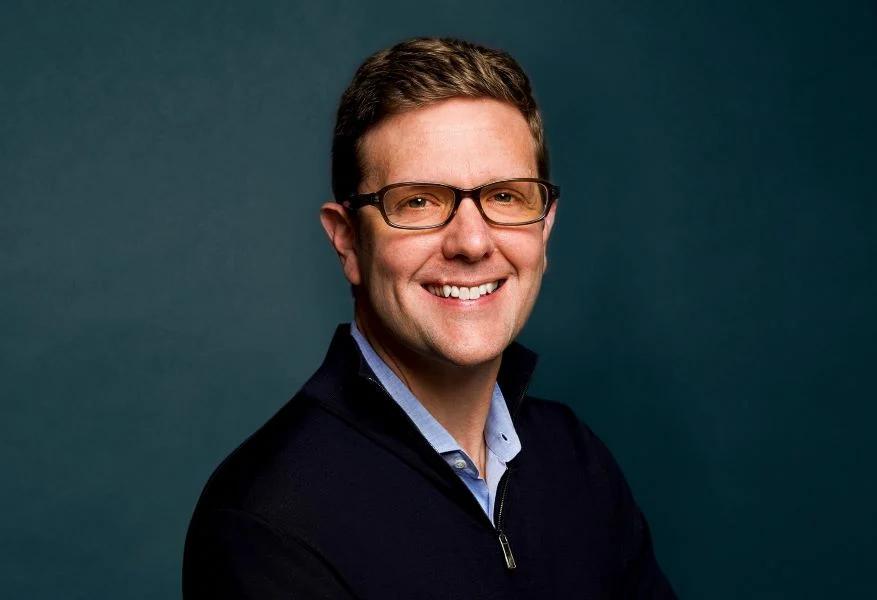- Center on Health Equity & Access
- Clinical
- Health Care Cost
- Health Care Delivery
- Insurance
- Policy
- Technology
- Value-Based Care
Day One Marks Milestone in Pediatric Cancer as Tovorafenib Approved in BRAF-Mutated Low-Grade Glioma
Pediatric brain cancer—an area of extraordinary unmet need—got the first treatment of its kind this week, as FDA granted accelerated approval to tovorafenib. The targeted therapy can be used on children starting at 6 months who have relapsed or low-grade glioma harboring a BRAF fusion or rearrangement, or a BRAF V600 mutation.
To be sold as Ojemda by Day One Biopharmaceuticals, the therapy is a selective type II RAF kinase inhibitor that targets a key enzyme in the MAPK signaling pathway.
Jeremy Bender, PhD | Image credit: Day One Biopharmaceuticals

This is the first time a systemic therapy has been approved for pediatric patients with this type of glioma. Low-grade gliomas account for about two-thirds of all brain tumors in children, and tovorafenib will be the only FDA-approved treatment for BRAF fusions or rearrangements, “which are the most common molecular alteration in pediatric low-grade glioma,” Jeremy Bender, PhD, chief executive officer of Day One Biopharmaceuticals, said in a statement.
For years, advocates for children with cancer have decried the relative lack of funding for pediatric cancer research compared with the investment and progress in treatments for adults. In an April 2023 interview with The American Journal of Managed Care®, Bender discussed the general lack of progress in pediatric cancer, as well as treatments in glioma specifically. Day One has a specific focus on pediatric cancer.
“The only clear standard of care today for children who have a low-grade glioma, and this is just in the frontline setting, is chemotherapy,” he said in the 2023 interview. “The duration of chemotherapy that can be administered for children is limited, because of the toxicities. Those toxicities include bone marrow suppression, they include cardiotoxicity, and a whole host of other of other [adverse events] or safety considerations, [that are more serious] that we’ve seen with tovorafenib.
“We’re hopeful that we'll have an agent that can be used for much longer periods of time to keep the tumor in check than you can with chemotherapy. And we're hopeful that there won't be the same kinds of long-term side effects that you see with those chemotherapeutic regimens.”
FDA’s decision on tovorafenib is based on results from the phase 2 FIREFLY-1 trial (NCT04775485), which evaluated the drug’s safety and effectiveness in 76 patients, yielding an overall response rate (ORR) of 51% (95% CI, 40%-63%) and a median duration of response of 13.8 months (95% CI, 11.3–not estimable). ORR, the trial’s primary end point, was assessed by blinded independent central review.
Patients in the study, who ranged in age from 6 months to 25 years of age, had at least 1 prior therapy. Those with certain biomarkers or conditions were excluded, including IDH1/2 mutations or FGFR mutations and a suspected diagnosis of neurofibromatosis type 1.
The most common adverse effects (AEs) seen in at least 30% of patients included rash, hair color changes, fatigue, viral infection, vomiting, headache, hemorrhage, pyrexia, dry skin, constipation, nausea, dermatitis acneiform, and upper respiratory infection.
Tovorafenib dosing is based on body surface area, with a maximum dose of 600 mg. The oral agent is given once a week until disease progression or unacceptable toxicity. Tovorafenib can be given as an immediate-release tablet or as an oral suspension.
“We are very proud that our first approved medicine addresses this serious and life-threatening disease of childhood and adolescence,” Bender said in the statement. “We are grateful to the pediatric low-grade glioma community, including patients and their families, study investigators, non-profit organizations, and advocacy groups, for their collaboration and support as we strive to close the innovation gap for children with cancer awaiting new treatments.”
